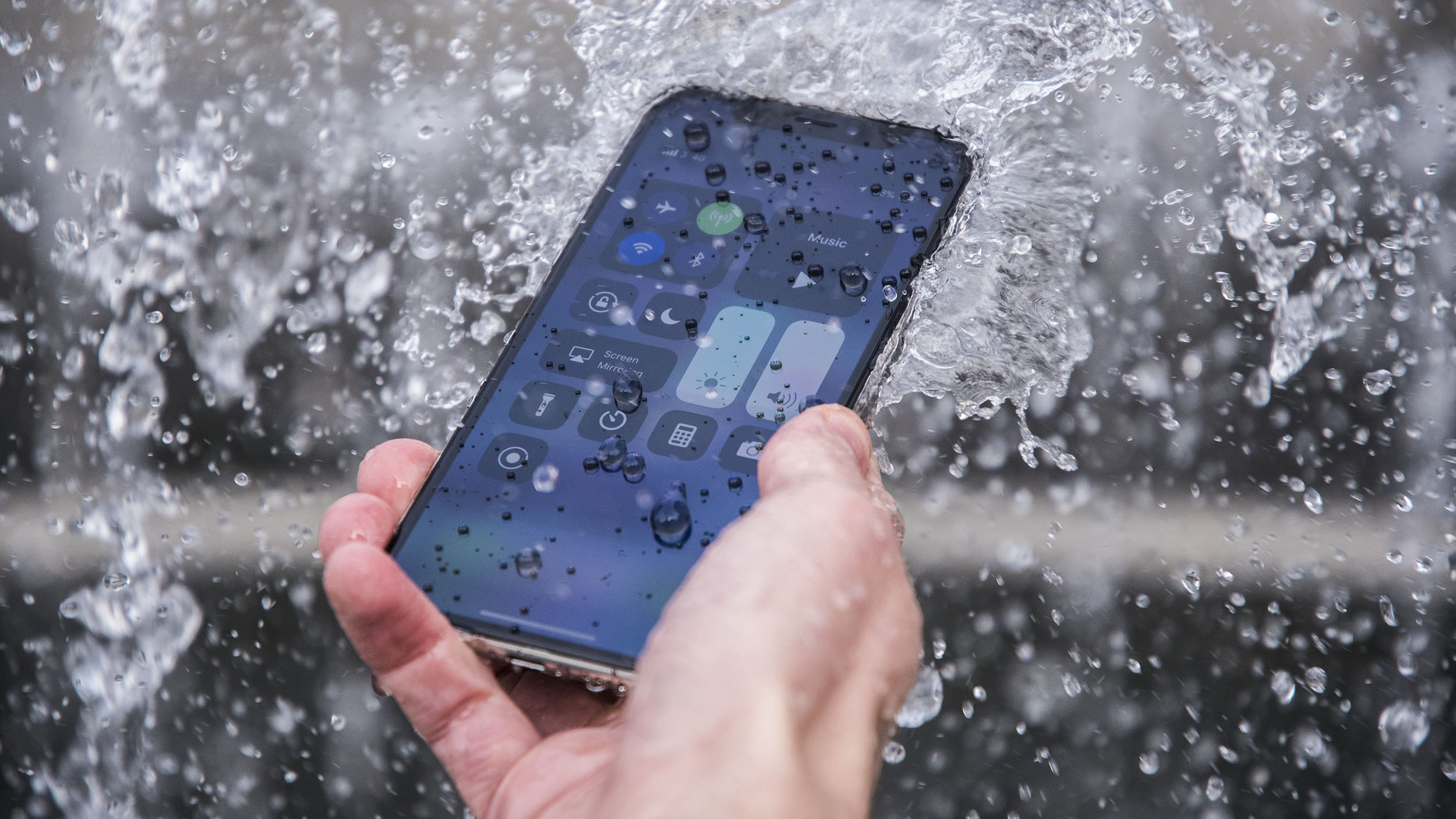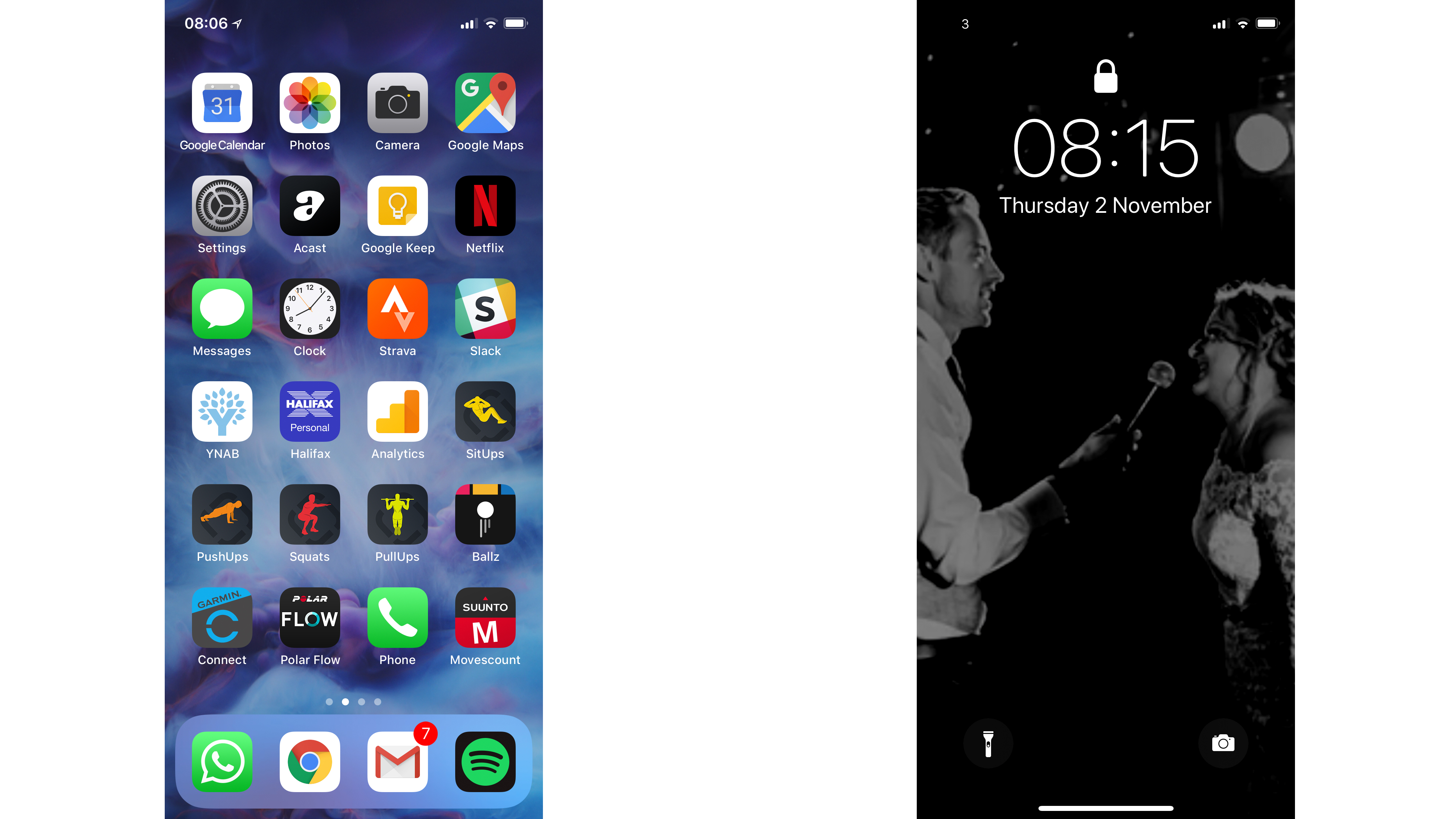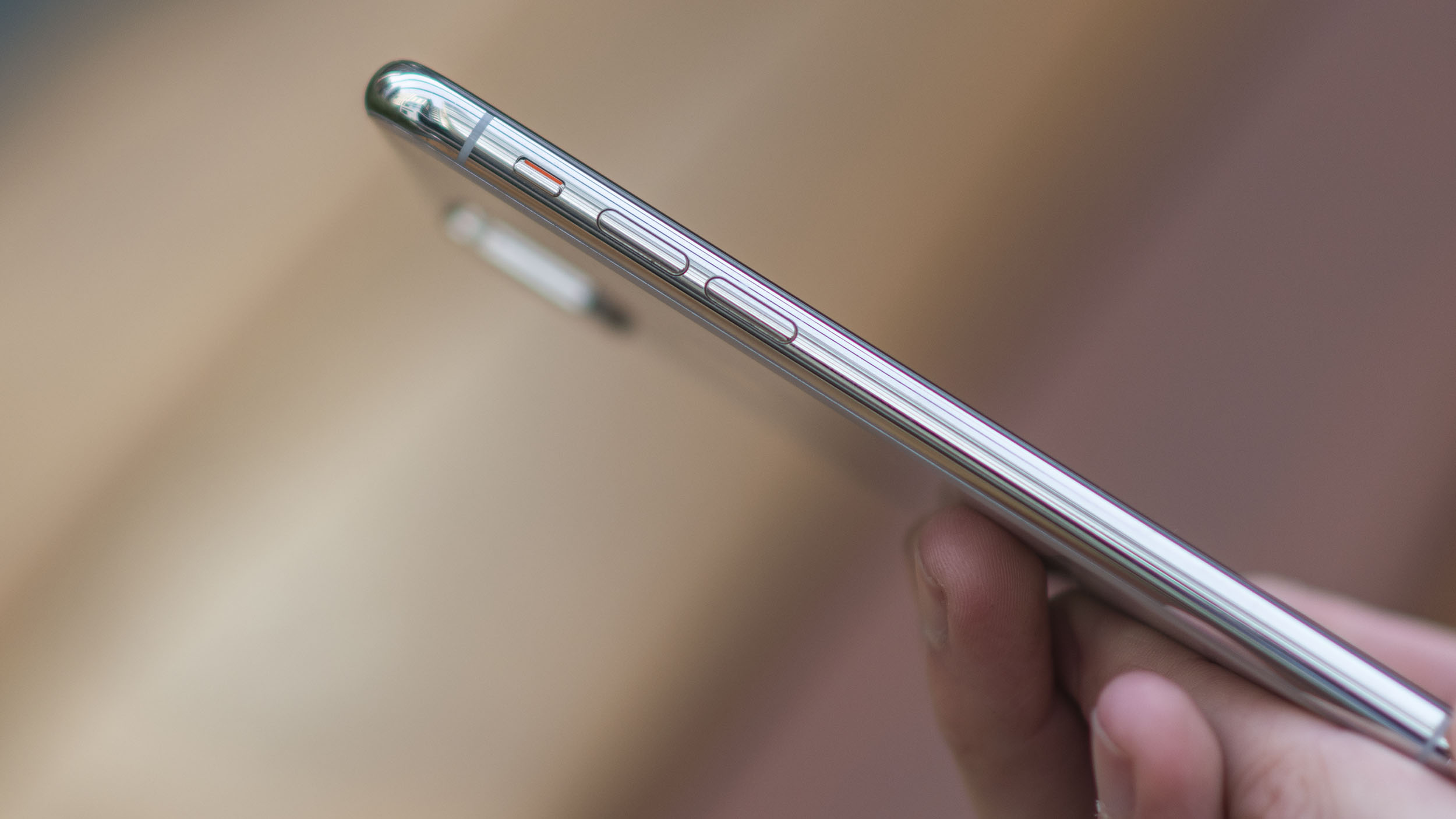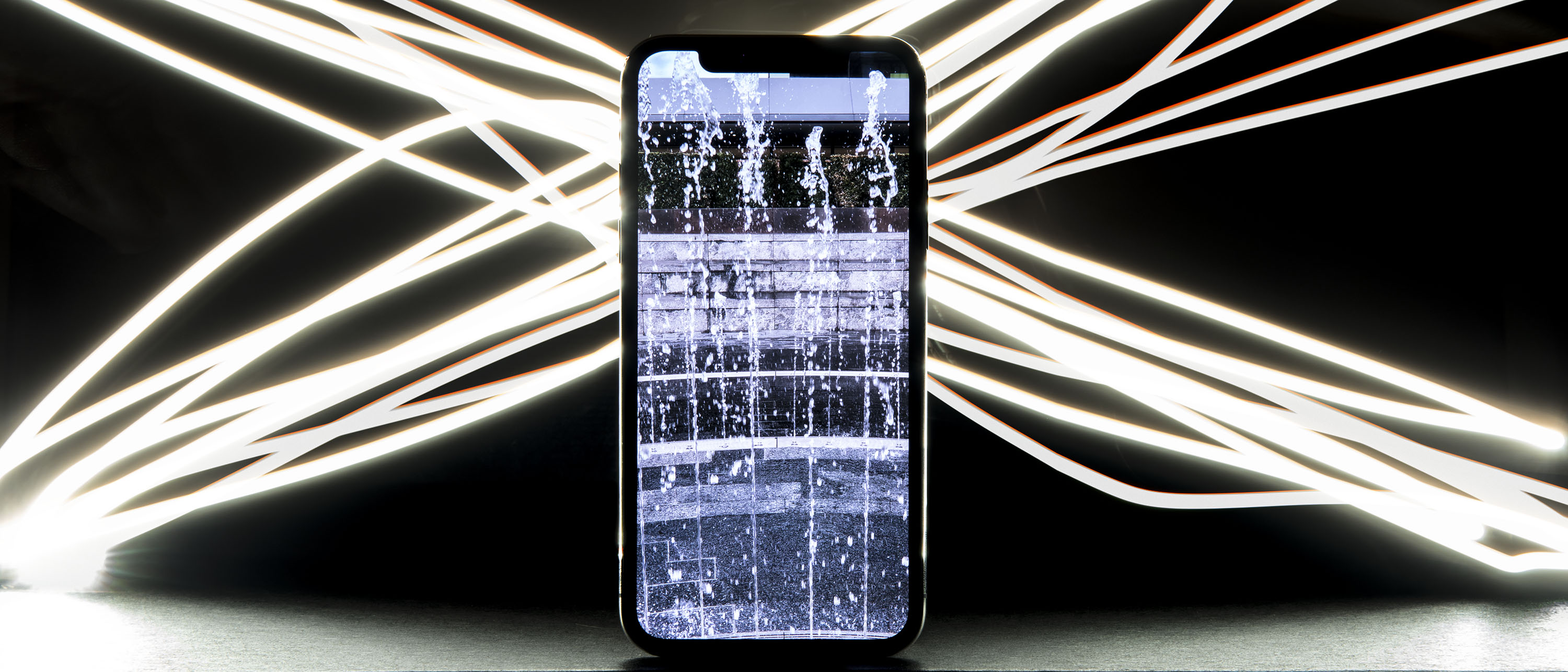Why you can trust TechRadar
- A new premium design language
- Glass back for wireless charging
- Feels weighty, in a good way
The design of the iPhone X is very much a mix of old and new. The new parts are obvious: this is a phone with very little bezel, a glass back and no home button.
But it's also got the familiar rounded shape in the hand – in fact, it harks back to the days of the iPhone 3G, feeling similar when picked up.
What you will sense when holding the iPhone X for the first time is that this is a premium handset. It feels expensive, with the weighty steel rim on the outside blending in impressively with the curved glass all around.

The silver version of the X comes with a polished stainless steel band, while the black option has a similar dark coloring that's been attached through a process called vapor deposition. It's also why we may not see a red iPhone X.
That means the band’s color isn’t painted on... it's inside the metal itself, giving the premium feel we're used to from Apple. A word of warning: after a few days carrying the phone in the pocket, unencumbered by an iPhone X case, we started to see a few examples of scuffing on the rim, so it's worth thinking about putting this in a case, or at the very least a skin, if you want to keep it looking nice.
While it weighs less than the iPhone 8 Plus (174g compared to 202g), the iPhone X feels a lot heavier in the hand, in a good way.

You’ll feel like this is a strong, solidly build handset (and don’t forget, it’s still IP67 water-resistant) and you’d be right – despite it being glass front and black, Apple believes it's made the strongest iPhone yet.
We really don't feel that you could bend the iPhone X by sitting on it...
One negative thing to say about the design: it's a smudge sucker. The outer band gets covered in fingerprints in no time at all, and the glass front and back will happily accept any oil your fingers want to deposit on them.

And while the rear of the phone is glass, as on the iPhone 8 and 8 Plus, there’s a different design language at play with the iPhone X. Every button is elegantly embedded into the rim of the phone, yet there’s a sharpness to each key that comes from them being machined in a certain way.
The same is true of the protruding camera bump on the rear of the phone – the edge is sharp, where on the iPhone 8 it rolls into the case. This shows that Apple is taking a new design direction with the X, hinting at the short-term future of iPhone design.
In terms of how the iPhone X feels in the hand, well, it’s surprisingly easy to use one-handed. It balances naturally in the hand, with the glass and metal combination feeling grippy enough to do so, and most thumbs will be able to roam comfortably over the slippery surface like a little flesh-colored penguin.
You’ll need to drag down the notifications panel and Control Center with the digits of your other hand on most occasions, but generally the iPhone X is a good mix of phablet-sized screen while being ergonomic enough to use in one hand.

A special mention to Apple for the way it’s incorporated the speakers into this tightly-packaged phone – the sound is really something, with full volume making the phone reverberate with audio.
Despite one of the speakers firing downwards from the bottom of the iPhone X, you can easily listen to movies without headphones – and the irritated glances from colleagues when we tested out this phone in the office shows that the sound can carry pretty far too.
There have been reports of a crackling speaker in some models - however, we've not seen that in the wild and our model was able to crank to full volume with ease.
In terms of sound, it’s worth reiterating that there’s no headphone jack on the new iPhone range – Apple has made a big bet that it can convince users to leave their 3.5mm headphones behind for AirPods, but it still annoys for now if you don’t have a decent pair of Bluetooth headphone or lose the adapter that comes in the box.

Gareth has been part of the consumer technology world in a career spanning three decades. He started life as a staff writer on the fledgling TechRadar, and has grew with the site (primarily as phones, tablets and wearables editor) until becoming Global Editor in Chief in 2018. Gareth has written over 4,000 articles for TechRadar, has contributed expert insight to a number of other publications, chaired panels on zeitgeist technologies, presented at the Gadget Show Live as well as representing the brand on TV and radio for multiple channels including Sky, BBC, ITV and Al-Jazeera. Passionate about fitness, he can bore anyone rigid about stress management, sleep tracking, heart rate variance as well as bemoaning something about the latest iPhone, Galaxy or OLED TV.
